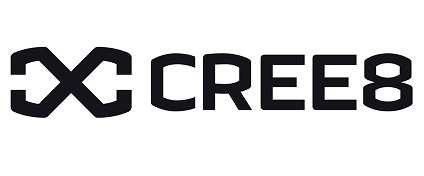Film and TV Production Services: A 2025 Buyer’s Guide

Introduction
With global content spend remaining exceptionally high, the demand for reliable, specialized, and efficient film and tv production services has never been more critical.
The production phase is where a project’s budget, timeline, and creative vision converge, and its success is entirely dependent on the quality and coordination of its external vendors.
From securing soundstages and camera packages to managing complex visual effects and multi-language localization, the modern production supply chain is a sprawling, global network of specialized companies.
For producers and studio executives, the core challenge is not just executing the creative vision, but skillfully managing this complex procurement process. A single underperforming vendor can create cascading delays and budget overruns that jeopardize an entire project.
This guide provides a strategic framework for understanding the key service categories and a modern approach to sourcing and qualifying the right partners in a fragmented global market.
Table of content
- The Modern Production Services Landscape
- Service Category 1: Physical Production Services
- Service Category 2: Post-Production Services
- Service Category 3: Visual Effects (VFX)
- Service Category 4: Localization and Global Distribution Services
- The Core Challenge of Vendor Procurement in the TV Series Lifecycle
- Conclusion: A Strategic Approach to Vendor Management
- Frequently Asked Questions
Key Takeaways
| Core Challenge | Sourcing and qualifying reliable film and TV production services in a fragmented, global market is inefficient and high-risk. |
| Strategic Solution | Leverage a centralized, data-driven platform to discover, vet, and engage with a global network of specialized production vendors. |
| Vitrina’s Role | Vitrina provides a searchable database of over 105,000 production and service companies, enabling executives to build a reliable global supply chain. |
The Modern Production Services Landscape
The production and post-production stages of a film or television series represent a massive logistical undertaking. This phase is no longer confined to a single studio lot; today’s productions are global operations that require a distributed network of highly specialized service providers.
According to a report on the global media and entertainment market by The Business Research Company, the industry is characterized by rapid technological adoption and an increasing focus on creating high-quality, globally appealing content.
This has professionalized the supply chain, leading to the rise of thousands of boutique firms that specialize in everything from drone cinematography to AI-driven dubbing.
For producers, this specialization is a double-edged sword. While it provides access to world-class talent and technology, it also creates a highly fragmented marketplace.
The vendor who supplied props for a historical drama in the UK is not the same one you’ll need for a sci-fi series shooting in South Korea. Effectively managing this stage of the TV series lifecycle requires a shift in thinking—from simply hiring crew to strategically building a global, project-specific supply chain.
Service Category 1: Physical Production Services
Physical production, or principal photography, is the phase where the majority of the filming takes place. The services required during this stage are tangible and location-based, forming the logistical backbone of the shoot.
- Equipment Rental: This includes everything from camera and lens packages to lighting, grip, and sound equipment. Specialized rental houses provide the mission-critical hardware needed to capture the footage.
- Studio and Soundstage Rental: Productions require controlled environments for interior scenes. This involves renting dedicated soundstages with proper lighting grids, soundproofing, and support facilities.
- Location Scouting and Management: Location managers are responsible for finding, securing, and managing all filming locations outside of a studio. This involves handling permits, logistics, and community relations.
- Casting and Crewing Agencies: These services help producers find and hire the necessary human resources, from background actors to specialized crew members like stunt coordinators or intimacy coordinators.
- Catering and Transportation: Large-scale productions are small armies that need to be fed and moved. These logistical services are essential for maintaining on-set morale and efficiency.
Sourcing these services becomes particularly challenging when filming in new or remote territories. A lack of local knowledge can lead to hiring unreliable vendors or paying inflated rates.
Service Category 2: Post-Production Services
Once filming wraps, the project enters post-production, where the raw footage is assembled into a finished product. This is a highly technical and creative phase that requires a different set of specialized vendors.
- Editing: The picture editor and their team assemble the shots into a coherent narrative. This is where the story’s pacing, rhythm, and emotional impact are crafted.
- Sound Design and Mixing: This includes everything from editing dialogue and adding sound effects (Foley) to creating the final audio mix. Specialized post-production sound facilities are essential for creating an immersive auditory experience.
- Color Grading: The colorist works with the director and cinematographer to define the final look and feel of the image, correcting colors and establishing a consistent visual tone.
- Music Composition and Licensing: This involves either hiring a composer to write an original score or licensing existing music tracks for use in the project.
For a deeper dive into this area, explore our insights on post-production trends and partner discovery.
Service Category 3: Visual Effects (VFX)
Once a niche service, Visual Effects are now a central component of a vast number of film and television productions, from blockbuster sci-fi epics to subtle digital enhancements in historical dramas. The VFX pipeline is incredibly complex and is almost always outsourced to one or more specialized VFX studios.
Key VFX services include:
- Compositing: The process of combining multiple visual elements from different sources into a single, seamless image.
- CGI and 3D Modeling: Creating computer-generated characters, environments, and objects from scratch.
- Digital Matte Painting: Creating photorealistic backgrounds and set extensions digitally.
- Motion Capture: Recording the movements of actors to drive the animation of digital characters.
The VFX industry is global, with major hubs in London, Vancouver, and Wellington. A single high-budget film might use half a dozen VFX vendors across multiple continents, making vendor management a significant challenge.
Service Category 4: Localization and Global Distribution Services
In today’s global streaming environment, a series is often released in dozens of countries simultaneously. This has made localization a critical final step in the production process. Localization services adapt the content for international audiences.
- Subtitling and Dubbing: Creating translated subtitles and recording new dialogue tracks in different languages. The demand for high-quality dubbing has surged as audiences worldwide have become more accustomed to watching international content.
- Graphics and Title Localization: Re-creating any on-screen text, such as titles, credits, or signs, in the target language.
- Compliance Editing: Ensuring the content adheres to the cultural norms and broadcast standards of each specific territory.
Efficiently managing localization for a global day-and-date release requires a highly organized and technologically advanced vendor. Learn more about how to find the right partners in our section on localization services.
The Core Challenge of Vendor Procurement in the TV Series Lifecycle
The core problem producers and studios face is the inefficiency and risk inherent in sourcing these varied film and TV production services. The traditional procurement process often relies on personal networks, out-of-date directories, or time-consuming manual research. This approach is no longer sustainable for several reasons:
- Lack of Visibility: It’s nearly impossible to maintain a comprehensive view of the best vendors in every service category and in every major production hub.
- Difficulty in Vetting: Assessing a vendor’s reliability, financial stability, and recent work from afar is extremely difficult.
- Inefficiency: The manual process of identifying, contacting, and negotiating with dozens of vendors for each project is a significant drain on resources.
This is precisely the challenge Vitrina was built to address. By providing a centralized, searchable, and constantly updated database of over 90,000 production houses and 15,000 service companies, Vitrina transforms vendor discovery from a high-risk guessing game into a streamlined, data-driven process.
The platform allows executives to filter by specialization, location, and reputation, enabling them to build a trusted, global supply chain with confidence.
Conclusion: A Strategic Approach to Vendor Management
The quality of a film or television series is a direct reflection of the quality of the vendors who work on it. In the modern globalized production environment, mastering the procurement of film and TV production services is a core competitive advantage.
Moving beyond traditional, relationship-based sourcing to a strategic, data-driven approach is essential for mitigating risk, controlling budgets, and ensuring creative excellence.
By leveraging a centralized intelligence platform, producers can gain the visibility and confidence needed to build a world-class supply chain for every project, regardless of scale or location.
Frequently Asked Questions
Film production services cover a wide range of activities required during the lifecycle of a project. They are typically broken down into four main categories: Physical Production (equipment, studios, location scouting), Post-Production (editing, sound, color), Visual Effects (CGI, compositing), and Localization (subtitling, dubbing).
Traditionally, producers find vendors through industry relationships, recommendations, and directories. However, a more modern and efficient approach is to use a centralized online platform or database that allows you to search for and vet companies based on their specialization, location, and past projects.
Production (or principal photography) is the phase where the actual filming of the movie or TV show occurs. Post-production begins after filming is complete and involves editing the raw footage, designing the sound, creating visual effects, and color grading to create the final product.
Localization is the process of adapting content for a specific international market. It is critically important in today’s global streaming market because it makes a film or TV show accessible and culturally relevant to audiences who speak different languages, thereby maximizing the content’s global reach and revenue potential.

























